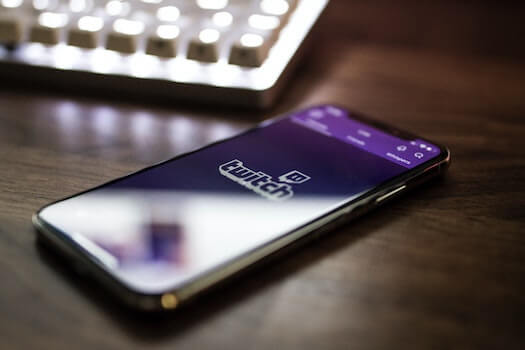 Plenty of industries took a hit with COVID-19. Livestreaming, though? It became more of a hit.
Plenty of industries took a hit with COVID-19. Livestreaming, though? It became more of a hit.
As in-person events went by the wayside due to safety concerns, businesses, thought leaders, and event spaces discovered (or rediscovered) the value of bringing real-time messages to consumers.
As a result, Twitch saw a 56% bump-up in viewership from the first to the second quarters of 2020.
Other livestreaming platforms reveled in their gains, too.
It’s not a forehead-slapping surprise that livestreaming would become a next-best-thing replacement for going to a concert or attending a conference.
We’ve become a nation of video-watchers, after all: eight in 10 people prefer checking out livestreams rather than combing through blog posts.
Why?
Livestreaming provides a sense of immediate gratification for audiences that they can’t get from consuming static content.
Yet many marketers remain hesitant when it comes to livestreaming.
Sure, they know they can potentially reach a broader swath of the population with a livestream.
(And as an added benefit, 70% of those who feel in sync with that messaging will double their spending —all because they experienced a deeper connection.)
However, they’re worried about getting the experience “just right.”
That’s natural, of course; when you’re investing in any marketing strategy, you want to entice as many consumers as you can.
Of course, you can’t just set a livestream date, send out invites, and wing it.
Instead, you have to set yourself up for success by skirting foreseeable pitfalls.
Below are a few common missteps and their solutions.
Don’t Assume a Livestream Is Low-Effort
If you’re thinking that a livestream is an easier lift than planning for an annual conference or keynote event, think again.
Livestreaming can’t be phoned in, and I’ve seen brands fall into this trap time and again.
In reality, video livestreams are more challenging because you have fewer ways to stand out.
Plus, your audience can choose to attend dozens of other events on any given day.
Start by figuring out why your livestream is important: are you using it as a sales tactic toward the beginning of your brand’s sales funnel? Is the livestream more of an educational piece?
Be specific and map out each target persona attendee’s journey, just as you would with an in-person event.
Once you’ve figured out the details above, work on smoothing out the small details.
Audiences have attended lots of virtual events lately, and they know what it looks like when something’s thrown together in a few frantic hours the night before.
With that in mind, set up a professional backdrop, practice smooth speaker-to-speaker transitions, and only show visuals that will surprise and delight.
You’re giving people a glimpse into your brand’s standards, after all.
Don’t Try To Do Too Much
Many first-time streamers want to use all the bells and whistles at their disposal.
They introduce multiple speakers too quickly, or they try to cut from one expert to another in short succession.
They go all-in—and then they discover that simple streaming is what sells.
Until you’re 100% comfortable with any platform, go easy on your first livestream.
You’ll still spend quite a bit of time on the back end producing it.
However, you’ll have fewer snags if you add new elements with each new livestream you offer.
If you need additional help, ask for it and bring in the experts you need to make your livestream shine.
For instance, marketers frequently assume production companies only cover commercial shoots.
Yet they can also support in-person and virtual live events by handling technical to-dos.
Don’t Forget to Do a Trial Run
What could be worse than starting a livestream only to have the internet go out or your equipment malfunction?
Though you can’t predict everything that could possibly happen, you can be ready for most outcomes if you test everything upfront.
In essence, you’ll want to treat your livestream like a full-fledged play and go through the motions of doing a dress rehearsal days before showtime.
Test your broadcasting platform, mics, and cameras; have guests do the same with their equipment; and make contingency plans.
Oh, and test your platform, too.
Research the functionality of options such as Zoom, Crowdcast, and BlueJeans.
Just don’t get locked in—you might discover you need to switch platforms because the livestream portal doesn’t align with your goals and desired experience.
Don’t Treat Livestreams as One-and-Done Ventures
Unlike an in-person event, a livestream can live forever.
Even after it’s over, it can be stored and made permanent.
You just have to choose the right livestreaming platform to make sure it’s saved correctly and not deleted.
Some platforms make pulling down your video easier than others, so do your homework about holding onto the footage or ask your production company for advice.
Once they’re archived, you can use your livestreaming experiences in countless ways.
Maybe you’ll share them occasionally on your websites or social channels.
Perhaps you’ll use some of them to train new employees as part of a robust orientation.
You might even want to curate and then transcribe your livestreams for future gated content to generate leads.
Be imaginative: your livestream could rev up your fan base, establish rapport with industry partners, and be a treasure trove of messaging ideas to build brand equity.
Livestreaming can seem deceptively effortless, but the reality is that it often takes just as much effort as an in-person event.
Nevertheless, it’s a worthwhile tactic—you just have to make sure that you prepare for the experience to truly wow audiences.